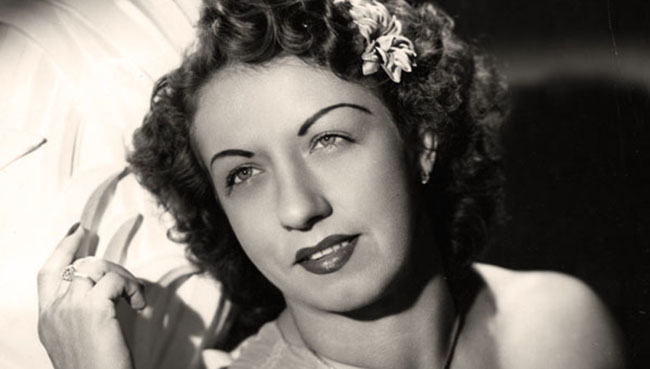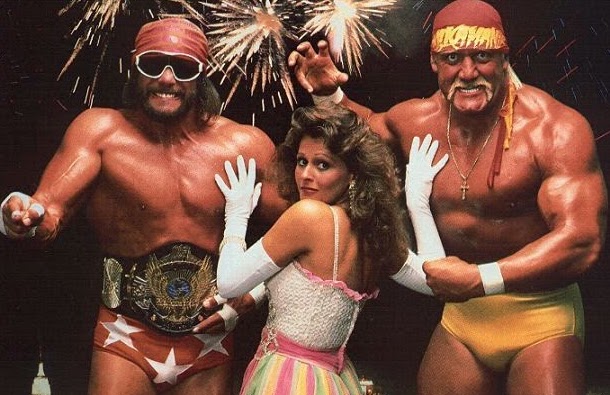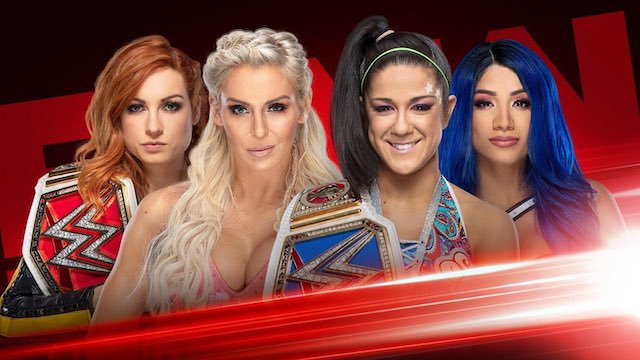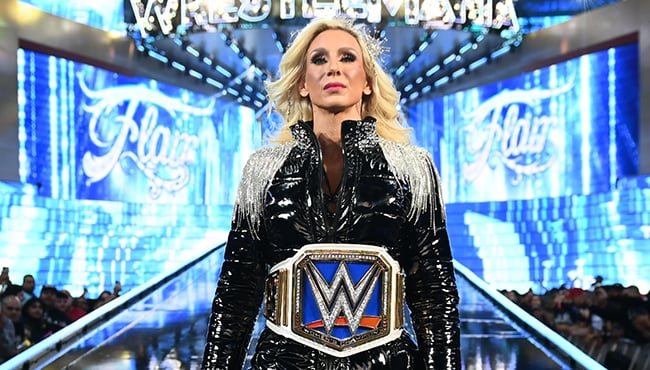wrestling / Columns
Strut The Ramp: Fashion in Women’s Wrestling
Over the Spring and Summer, Len Archibald will be a 411Mania guest columnist analyzing the state of women’s professional wrestling in North America.
I spent three years in the fashion industry as a photographer – and what an interesting time that was in my early 20’s! During that period, I was fully immersed in the industry – traveling, partying, spending stressful hours on Photoshop…more partying, and meeting some of the most eccentric and beautifully maddening (pre-Giulia) human beings that I have ever met.
Despite the madness, the egos, the drugs (sooooo many drugs😶🌫️) the superficiality and all the things my former runway model mother warned me about – every time I met with a fashion designer, it was serious business. I have always had a connection to high fashion from my mother and then working as a photog so when shows like Project Runway and America’s Next Top Model debuted, I ate that shit like a bucket of chocolate ice cream and a case of Pinot Noir. I’m a horrible person and part of the problem, I know.🤣

This is a rare topic of discussion of an underrepresented and under-appreciated but extremely important piece of professional wrestling, especially for women.
For decades, the squared circle has been a stage for evolving athletic prowess and character development, nowhere more visibly and profoundly than in the vibrant, sometimes controversial, and undeniably impactful world of women’s professional wrestling. And at the heart of this evolution, often overlooked but always central, is fashion – not merely as an aesthetic choice, but as a powerful statement of identity, athleticism, and social commentary.
From the pioneering “Glamour Girls” to the modern-day “Superstars,” the attire of female wrestlers has always mirrored the shifting perceptions and roles assigned to them within the industry. Today, as we celebrate a decade of the “Women’s Revolution,” it’s impossible to ignore how the very fabric of their gear has become a canvas for empowerment, a testament to athletic credibility, and a vibrant extension of their unique personas.
Threading Wrestling’s Wardrobe History

To truly appreciate the sartorial strides of today, we must first glance at the historical threads woven into women’s wrestling. In the early days, trailblazers like Mildred Burke and later, The Fabulous Moolah, navigated a landscape where female wrestlers were often caught between two simple archetypes: the “glamour girl” meant to appeal to a male gaze, or the “tough girl” who defied traditional feminine norms. Their attire, often modest wrestling singlets or two-piece sets, reflected a nascent industry still figuring out how to present women as both athletes and performers. Exposure was limited, and the sport was frequently relegated to novelty acts or sideshows, occasionally borrowing aesthetics from vaudeville or burlesque, which, while entertaining, did little to elevate its athletic legitimacy.
The “Rock ‘n’ Wrestling Era” of the 1980s, a technicolor explosion of mainstream popularity, offered a fascinating dichotomy in women’s presentation. Consider the immaculate Miss Elizabeth, “The First Lady of Wrestling,” whose elegant dresses and refined demeanor perfectly complemented the flamboyant “Macho Man” Randy Savage. Her attire was never about athleticism but about portraying a classy, sophisticated presence, a stark contrast to the wild, theatrical makeup and often audacious outfits of Sensational Sherri Martel, who mirrored the villainous and aggressive nature of her charges – also at times matching the wild gear of The Macho King when they were a heel pairing (IMO, the WWF Savage/Elizabeth storyline that pretty much culminated at WM 8 is still the single best long-term storyline in wrestling history, but I digress…) These examples highlight how even then, attire was a deliberate choice, intended to amplify character and narrative, albeit within more rigid gendered confines.

However, the late 1990s and early 2000s, famously dubbed the “Attitude Era” and subsequently the “Divas Era,” marked a significant, and often criticized, period for women’s wrestling fashion. This was the peak of overt sexualization, where female talent was primarily marketed as “Divas” – beautiful, alluring, and often clad in minimal, revealing attire ranging from bikinis to lingerie. Matches like the notorious “Bra and Panties” bouts prioritized appearance over in-ring skill, reflecting a booking philosophy that often sidelined athletic competition for titillation.
Sunny definitely kicked things off – at one time she was the most popular and downloaded internet celebrity with her bikini shoots – but, yes while those were still under the focus of the Male Gaze, Sunny’s fashion was more akin to the Sports Illustrated swimsuit editions. Her in-ring fashion, despite coming up in the New Generation Era, was the one talent who felt “adult”.

Former WWF Women’s Champ Sable, one of WWE’s biggest stars during the Attitude Era, would “grind” her way to the point where she would wear pasties in the ring. Chyna, who debuted as an unconventional powerhouse would have wardrobe that would more revealing and feminine as her career took off and Playboy came calling. Of course, everyone who knows Lita normally thinks about a particular masterpiece of music performed by Sisqo that was a defining part of her character.
WWE allowed several of their talent to do Playboy spreads. The fingerprints of Vince Russo’s “Crash TV” – including the highly sexualized, proto-misogynistic portrayal of women was all over WWE and WCW television. While TNA and independent circuits offered glimpses of more diverse and performance-oriented gear, mainstream women’s wrestling was largely constrained by these narrow fashion dictates, hindering the perception of their athletic prowess.
The Revolution’s Runway: Fashion as Empowerment and Commerce

The winds of change began to blow around 2014, fueled by the passionate #GiveDivasAChance social media movement and the burgeoning, talent-rich NXT women’s division, a seismic shift occurred. Sasha Banks, Bayley, Becky Lynch, Charlotte Flair, Ronda Rousey, and Asuka emerged as central figures, not just for their in-ring abilities but for their burgeoning individuality, which was increasingly reflected in their attire. The term “Diva” faded, replaced by “Superstar” (or equivalent terms in other promotions like AEW and Impact Wrestling), signaling a renewed emphasis on athletic prowess, character depth, and unique personality.
Fashion rapidly transformed into a crucial storytelling device. No longer simply revealing, gear became an extension of a wrestler’s gimmick and journey. Consider Bayley’s evolution: from the vibrant, hug-emblazoned attire of her “hugger” persona to the darker, more serious gear that marked her transition into a cunning heel. Alexa Bliss, a master of character reinvention, has frequently changed her attire to mirror her various personas, from the whimsical “Goddess” to the unsettling, supernatural “Fiend”-inspired looks. Or think about Rhea Ripley and how her fashion evolution from who she was in the Mae Young Classic to Mami and the two are night and day. Her ring gear – the dark rocker goth perfectly encapsulates her “Eradicator” persona. When her entrance hits and she arrives, just from her gear, even newcomers know what she is all about. Consider Timeless Toni Storm, who went the opposite direction, shedding her “rocker” wardrobe to embrace the the over-the-top gowns, capes and high couture that is everything a delusional pro wrestler who believes they live in the 1930s would be. These all exemplify how just a change in ring gear can alter the course of a career.

Perhaps no one at this time embodies the personal touch more than Bianca Belair, “The EST of WWE,” who not only creates much of her elaborate, often hand-stitched, gear but also incorporates her iconic braid into her aesthetic, turning what amounts as a foreign weapon into a fashion statement. This artistic ownership over their look is a profound reclaiming of agency, moving away from mandated, often objectifying, outfits.
Functionality now seamlessly meets fashion. Modern wrestling gear is designed not just for visual impact but for high-level athletic performance. The balance is critical: how can a wrestler execute a moonsault or a diving crossbody with grace and power if their attire hinders movement? Today’s outfits are crafted with durable, flexible fabrics, allowing for explosive athleticism while still being visually striking. This shift challenges traditional notions of femininity and strength, showcasing a diverse range of body types, ethnicities, and personal styles.

Beyond the ring, unique attire designs translate directly into marketable merchandise, forging deeper connections with fans. When fans cosplay as Mercedes Mone wearing her “CEO” gear or someone wore a “Man” beanie inspired by Becky Lynch, they’re not just buying a product; they’re buying into the character, the narrative, and the empowerment these women represent. Asuka’s flowing Japanese wardrobe and intimidating kabuki masks is uniquely hers – an immediate symbol of Fighting Spirit. This branding creates a symbiotic relationship between performer and audience, transforming wrestlers into powerful role models whose aesthetics resonate far beyond the wrestling arena.
The creation of wrestling fashion is a fascinating interplay of artistry and business. Many wrestlers are deeply involved in the design process, collaborating with specialized gear makers who have become unsung heroes of the industry. Individuals like Sarath Ton (aka Mikaze), who has famously worked with Mercedes Moné, and many others, are the architects behind these intricate, personalized costumes. They understand the unique demands of wrestling: fabrics must be breathable and durable, embellishments secure, and the overall design impactful enough to be seen from the nosebleed seats. This often involves the use of high-tech materials, intricate embroidery, and sometimes even LED lighting to create unforgettable entrance attire.
Entrance gear, in particular, is a vital component of the overall spectacle. Think of Charlotte Flair’s regal robes or the elaborate, thematic costumes worn by Chelsea Green for major events like the Royal Rumble and WrestleMania. These aren’t just clothes; they’re visual declarations, building anticipation and setting the tone for the performance to come. The grander the event, the more intricate and expensive the gear, underscoring its significance in the marketing and visual narrative of professional wrestling. The direct link between popular gear designs and consumer product sales further solidifies fashion’s integral role in the wrestling economy.
Challenges and the Evolving Canvas

Despite the monumental strides made, the conversation around women’s wrestling attire is ongoing. Debates persist regarding the ideal balance between athleticism, character expression, and aesthetic appeal. Wrestlers, much like any public figures, face constant pressure to innovate their look and stay relevant within ever-shifting trends. What constitutes “empowered” fashion will undoubtedly continue to evolve, reflecting broader societal changes and the dynamic nature of the wrestling industry itself.
There are internal debates: Mickie James has voiced her opinions on the current female superstars of today wearing ring gear that is too revealing – while being called out for her own overtly sexualized outfits she wore at the height of her popularity in WWE (but we do need to consider how much input at the time she had in regards to what to wear.) What one sees as “empowerment”, another may see as “objectification”. Where is the line to cross and and more importantly…who decides what that line is?

Yet, one thing is clear: the “Women’s Revolution” has not merely changed what women wear in the ring; it has transformed how they are perceived, both by the audience and by themselves. The fashion choices of today’s female wrestlers are a testament to their strength, their individuality, and their control over their own narratives. They have taken the “ramp” of professional wrestling and turned it into a runway, not for objectification, but for empowerment, athleticism, and unadulterated self-expression.
It’s a world where stories come alive, and where, particularly over the last decade, the women of the squared circle have proven that their power, their skill, and their very identities can be elegantly and forcefully articulated through the very clothes on their backs. They’re not just breaking barriers; they’re strutting through them, leaving a trail of glitter, sweat, and undeniable impact, proving that true empowerment is always in style.
…And as always, Fuck Cancer. 🧬🩻🏥🩸
As someone who lives with Bipolar-1, I want to make everyone aware that July is Disability Pride Month. We are not defined by our disabilities: We Belong Here, and We’re Here to Stay✊🏾
Agree or disagree? Think I am insane? Leave a comment!
Follow me on Instagram!
Follow me on Bluesky!
Follow me on Threads!
Subscribe to my YouTube Channel!
Subscribe to 411Mania’s own Kat Bourn’s Substack!
SUPPORT THE CANADIAN CANCER SOCIETY
SUPPORT THE AMERICAN ASSOCIATION FOR CANCER RESEARCH
SUPPORT CANCER RESEARCH UK
More Trending Stories
- Bron Breakker Seen Limping, Helped to Backstage Area Following Match at WWE SummerSlam 2025
- Dominik Mysterio Takes Shots at CM Punk for Trying To Fight in the UFC
- Cody Rhodes Shot Down Notion Of Double Turn With John Cena Before WWE Smackdown
- Jim Ross Reveals Why Steve Austin vs. Hulk Hogan Never Happened